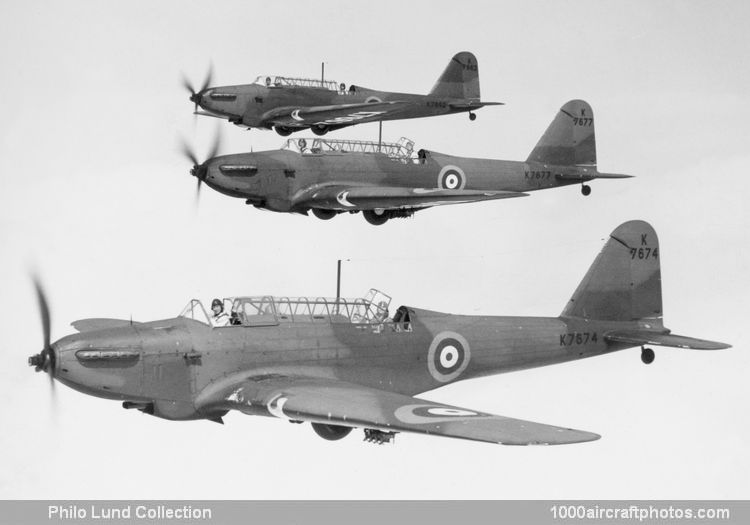01/15/2019. Remarks by Johan Visschedijk: "Prototypes of the Armstrong Whitworth A.W.29 and the Fairey Battle were ordered in response to tenders to Air Ministry's Specification P.27/32 of April, 1933. The Fairey tender to P .27/32, of which the Air Ministry ordered a single prototype in June 1934, was designed by Marcel J.O. Lobelle.
The 1,030 hp Rolls-Royce Merlin I twelve-cylinder liquid-cooled V-engine blended cleanly into the nose of the gently-tapering, oval-section fuselage, the crew of two being housed inside a long, framed canopy which extended between the pair of cockpits set at the leading and trailing edges. The moderately-tapered, all-metal wings were set at the base of the stressed-skin fuselage, the outer panels being attached to the center section constructed integrally with the fuselage. Retraction of the main landing gear was to the rear, the exposed portions of the wheels being backed by metal fairings.
In the production aircraft there was provision for a crew of three – pilot, bomb-aimer/observer and radio-operator/gunner. Some of the early production aircraft were fitted with dual control. Armament consisted initially of a fixed forward-firing 0.303 in (7.7 mm) Browning gun in the starboard wing, outside the propeller disc, and a 0.303 in (7.7 mm) Vickers gun on a Fairey high-speed mounting for the rear gunner. The rear portion of the long canopy was arranged to tilt forward and downward when the gun was to be used. Following disastrous encounters with enemy fighters during operations with the Advanced Air Striking Force in France early in WW II, an extra gun was installed in the belly at the trailing edge on a semi-free mounting to enable it to fire to the rear under remote-control.
The bomb-aimer's prone position was within the center section, below and behind the pilot. The bombload, normally four 250-pounders (113.5 kg), were carried on hydraulic jacks which retracted into the wings. Except when dive-bombing, for which the jacks and bombs were lowered below the wings, the bombs were released through trap-doors. A rack under each wing allowed an additional bomb-load of up to 500 lb (227 kg).
Serialed K4303, the first take off was made at Northolt by Chris Staniland on March 10, 1936; by the time that it appeared in the New Types Park at the 1936 RAF Hendon Display a new canopy had been installed, the rear portion being faired at a gentler angle into the upper decking.
Taking over from the outmoded Harts and Hinds, the shapely Fairey was adopted as the RAF's new light bomber, being ordered in 1935 – before its maiden flight – with development taking place to Specification 23/35. In its first production version – the initial order was for 155 – the Battle's maximum speed was reduced to 243 mph (191 kmh) at 16,200 ft (4,879 m) from K4303's 257 mph (414 kmh). Specification 14/36 of May 27, 1937, was issued for a further batch of Fairey-built Battles, and Specification 32/36 of August 17, 1936, covered those constructed by Austin Motors.
No. 63 Squadron at RAF Upwood, Cambridgeshire, UK, introduced the Battle Mk.I into the RAF when it took delivery of the second production aircraft (K7559) on March 20, 1937. The Battle Mk.II used the Merlin II engine, the Mk.III the Merlin III, the Mk.IV the Merlin IV and the Mk.V the Merlin V.
The main reason for the Battle's failure in action was that it was underpowered and obsolescent by the time that it was flown over the Western Front. Apart from its use by the RAF, the Battle entered service in Australia, Canada, South Africa and Turkey. Fitted with Merlin IIIs, eighteen were built for the Belgian Air Force by Avions Fairey at Gosselies, Belgium and were altered to incorporate a radiator scoop which was extended towards the nose.
Photographed during a flight from Andover, Hampshire, the three aircraft above belonged to RAF 12 Squadron. In 1940 all three became instructional airframes, numbered 1933M, 1881M, and 1800M respectively."
